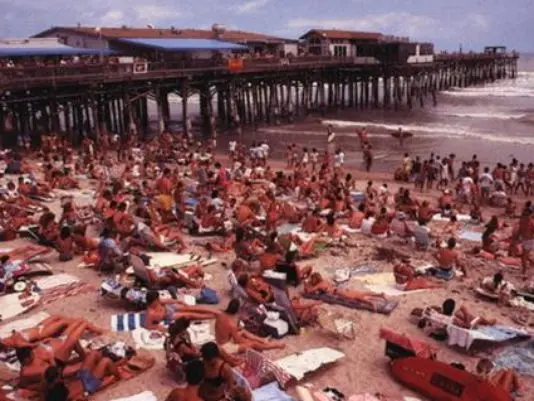Spring has always been thought of as a period of renewal and rebirth. The season also has long been associated with revelry and excess. In the spring, ancient Greeks worshiped Dionysus, the god of wine. At the same time of year the Romans venerated Bacchus, their god of wine. Other pre-Christian pagan fertility rites evolved into contemporary May Day celebrations.
Since the mid-twentieth century, students in their late teens and early twenties have celebrated the ritual of Spring Break as a modern day Dionysian festival or Bacchanal, and the most popular setting for their pilgrimage has traditionally been Florida.
Historically, three of the top five Spring Break destinations in the United States are in Florida. Fort Lauderdale, Daytona Beach, and Panama City Beach make the list along with Lake Havana City, Arizona and South Padre Island, Texas.
In recent decades, Cocoa Beach, Fort Myers, and Tampa-St. Petersburg have also become very popular sites for Spring Break activities.
Spring Break as we know it today was created in Fort Lauderdale. As early as the mid-1930s, college swim teams gathered in Fort Lauderdale to use the first Olympic-sized pool in Florida, the Casino Pool. When the participating swimmers weren’t training at the pool they were partying on the beach, and a tradition was born. After World War II, other college students caught on to how much fun the swimmers were having in Fort Lauderdale and started joining them there for Spring Break.
The 1958 Glendon Swarthout novel “Where the Boys Are,” the 1960 film adaptation of the book, and the Connie Francis theme song for the film solidified Fort Lauderdale as the Spring Break mecca for students across the country.
In “Where the Boys Are,” one of four girls vacationing in Fort Lauderdale gives in to the temptation of premarital sex with a college boy she is attracted to. She is then abandoned by the boy, raped by another, and suffers a nervous breakdown. Despite the severely moral message of the story, what most young people saw in the film were “cool” teenagers having lots of fun at the beach. Attendance at Spring Break in Fort Lauderdale doubled to more than 50,000 and continued growing in subsequent years.
Spring Break in Fort Lauderdale became so popular, that the city became wary of the annual influx of more than 250,000 students who were ready to party, many of them irresponsibly. By 1985, the city was passing laws to restrict Spring Break activities, and the focal point of the festivities moved north to Daytona Beach.
During the 1980s and into the 1990s, Daytona Beach attracted as many as 350,000 students for Spring Break, while attendance in Fort Lauderdale dropped to around 20,000. In the early 1980s, MTV began televising concerts from Daytona’s historic coquina band shell on the beach, constructed in 1936 as a WPA project. Concerts by the City Band of Daytona and the Daytona Junior Orchestra were replaced with performances by Cheap Trick, Heart, and the Red Hot Chili Peppers. By 1986, the popular “Music Television” network was broadcasting all of their programs from Daytona during Spring Break.
Like Fort Lauderdale before it, local officials in Daytona eventually decided that the income generated by Spring Break was not equal to the problems caused by underage drinking and property damage incurred each year. By the turn of the century, the exile of MTV and other restrictive rules sent students flocking to Panama City Beach.
With more than 500,000 students coming to Panama City Beach each year for Spring Break, the city welcomes the annual boost to their economy, at least for now.
The Florida Historical Society is holding their 2014 Annual Meeting and Symposium in the birthplace of Spring Break, Fort Lauderdale, May 22-24, at the Hyatt Regency Pier Sixty-Six. The classic film “Where the Boys Are” will be shown at the conference. More information is available at myfloridahistory.org/annualmeeting.
Dr. Ben Brotemarkle is executive director of the Florida Historical Society and host of the radio program “Florida Frontiers.” The show can also be heard online at myfloridahistory.org.
